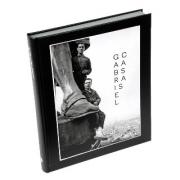Gabriel Casas
grupo autores
From a petite bourgeoisie family of Barcelona linked to the paintings and photography he was a bohemian and at the same time a tireless worker, a devotee to the silence, solitude and the darkness of his studio. Influenced by the works of photographers such as Moholy-Nagy or Alexander Rodchenko, he stood out due to the innovative character of his style and the constant experimentation with the poster art, the advertising photography and the photo montage.
By the age of 21, in order to avoid entering the military service he migrated to Argentine, where he had an uncle and later on to Uruguay. There he circulated the local bohemian milieu and worked as assistant in several different photography studios until 1917 when he returned to Catalonia.
The first signed photos that he published in the La Jornada Deportiva in 1923. In those years the sports in Barcelona became a spectacle for the masses largely due to the emergence of the sports press which started to rage the news-stands of La Rambla. Between 1925 and 1928 he published regularly in L'Esport Català although he also diversified his works to other spheres cooperating frequently during a decade, until 1935, with the Catalan cultural magazine per excellence D'ací d'allà.
From 1929 onwards, when he was hired as an official photographer of the Barcelona International Exposition, Gabriel Casas' career took off. On top of the portrait and the graphic sports columns he adds new challenges, new ways of looking, and new scenes, ending up becoming a versatile and multidimensional photojournalist. A decade during which he would publish photographic reports of high quality in the leading newspapers such as La Vanguardia, L'Opinió and La Rambla, as well as Catalan magazines. Amongst the publications for who he worked his involvement in the magazine Imatges should be emphasised. In this he is practically the only photograph alongside Gaspar. The pages of this weekly publication are an ideal showing of the versatility and complexity of Casas' work, a perfect combination of noticeable photographic report and the avant-gardist aesthetics which was dominant in Europe during this period.
In 1936, in a phase of pre-war, he made one of his most famous works: the poster with a portrait of the president Francesc Macià and the slogan Catalans! that ERC used -with a resounding success- during the general election campaign of February.
Once the war had ended, he was prosecuted and incarcerated, accused of collaborating with the Comissariat de Propaganda and other media related to the Republic. He was newer able to publish in the press again. During the Franco regime he dedicated himself to industrial and advertising photography. He died in Barcelona, at an age of 81 years, after a prolonged illness.
Web: gabrielcasas.cat
Gabriel Casas (2002): Fotomuntatges. San Cugat del Vallès: Generalitat de Catalunya.
Antebi, Andrés i González, Pablo (2016): Gabriel Casas: l'angle impossible : 1892-1973. Barcelona : Ajuntament de Barcelona i ANC.

Núria Casas Formiguera